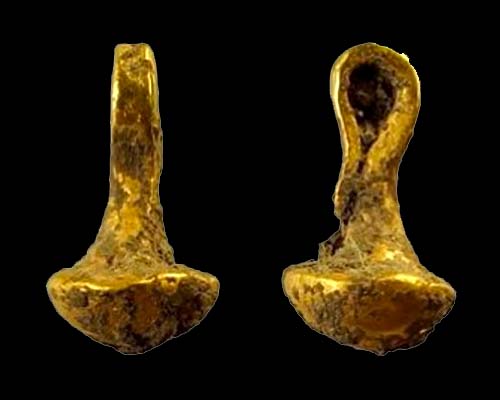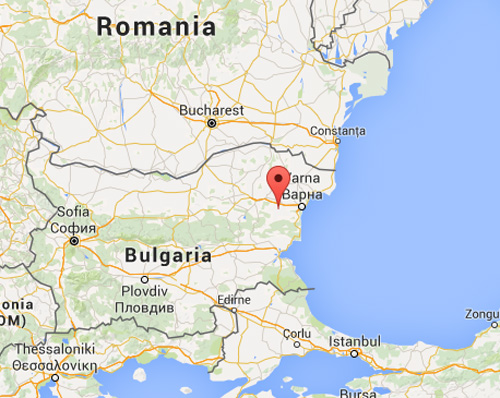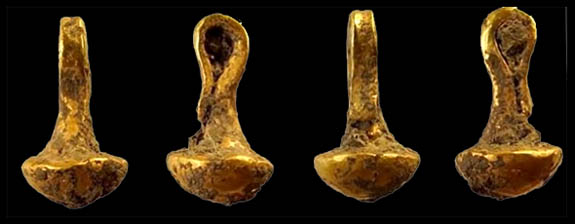A 6,600-year-old 24-karat gold pendant found at the archaeological site of Solnitsata in Bulgaria could be the world's oldest bling.

The 2-gram pendant reflects the skill of a complex prehistoric society — possibly one of the first to work out how to process and produce gold goods, according to Professor Vassil Nikolov of the National Institute and Museum of Archaeology of the Bulgarian Academy of Sciences.

"What's interesting regarding the gold jewel... is that it wasn't discovered inside one of the graves but between them, which might testify to some kind of a more special ritual," said Nikolov in an interview with Cherno More agency. "In any case, this jewel is another specimen of the art of jewelry making that was developed at the time."

The scientists believe the jewelry was worn as a pendant, most likely hanging from a cord. They are not sure, however, if the jewelry was worn by men, women or both. Either way, they believe the jewelry was a symbol of social status, the Daily Mail reported.

The fortress of Solnitsata is believed to date back to 4,300 BC, but Nikolov believes the gold pendant could be even 200 or 300 years older than that, making it the oldest processed gold ever found in Europe.
Solnitsata, which literally means "salt pit," has been dubbed as “Europe’s oldest prehistoric town.” Scientists were surprised to learn about a highly developed civilization that specialized in the production of salt. Salt, at the time, was used as currency and exported to distant markets. (Neat trivia: "Salary" is derived from the word "salt.")
The residents of the town apparently used ceramic vessels and large domed kilns to boil water from a local saltwater spring. The resulting salt bricks were used for the preservation of meat.
Credits: Screen captures via YouTube/News Worldwide/Trud Daily; Google Maps.
No comments:
Post a Comment